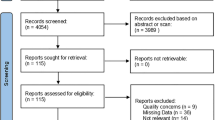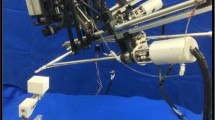Abstract
Background: In order for robotic devices to be introduced successfully into surgical practice, the development of transparent surgeon/machine interfaces is critical.
Methods: This study evaluated the standard foot pedal for the AESOP robot compared to a voice control interface. Speed, accuracy, learning curves, durability of learning at 2 weeks, and operator-interface failures were analyzed in an ex vivo model.
Results: Foot control was faster and had less operator-interface failures. Voice control was more accurate as measured by ``pass points.'' The foot control learning curve reached a plateau at the third trial, while the voice control did not fully plateau. Durability of learning favored the foot control but was not significantly different.
Conclusions: Currently, the voice control is more accurate and has the advantage of not requiring the surgeon to look away from the operative field. However, it is slower and may require more attention as an interface. As voice recognition software continues to advance, speed and transparency are anticipated to improve.
Similar content being viewed by others
Author information
Authors and Affiliations
Additional information
Received: 24 October 1997/Accepted: 2 February 1998
Rights and permissions
About this article
Cite this article
Allaf, M., Jackman, S., Schulam, P. et al. Laparoscopic visual field . Surg Endosc 12, 1415–1418 (1998). https://doi.org/10.1007/s004649900871
Published:
Issue Date:
DOI: https://doi.org/10.1007/s004649900871




